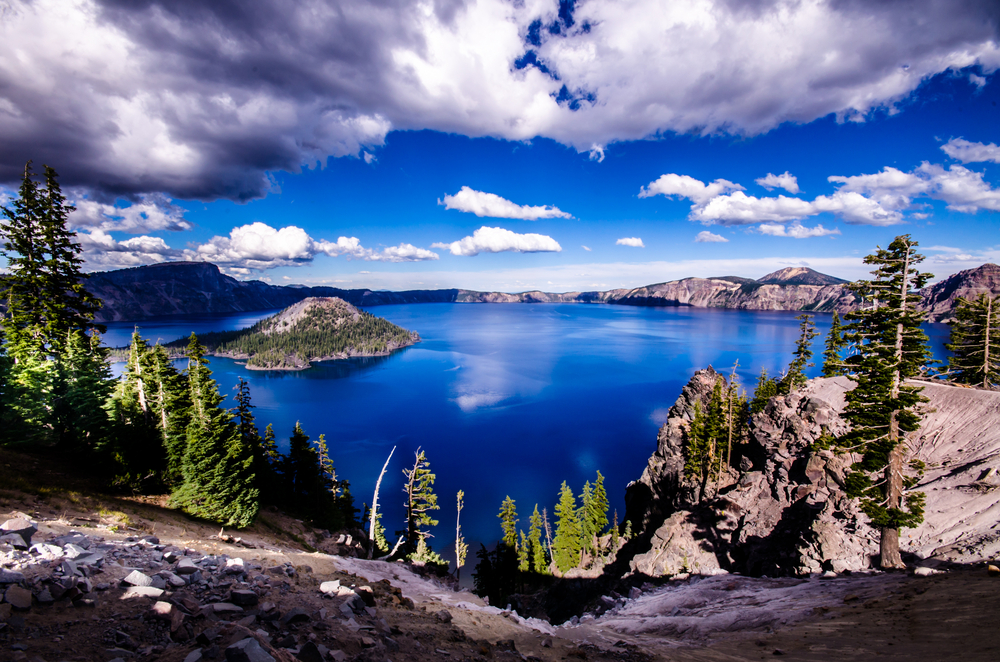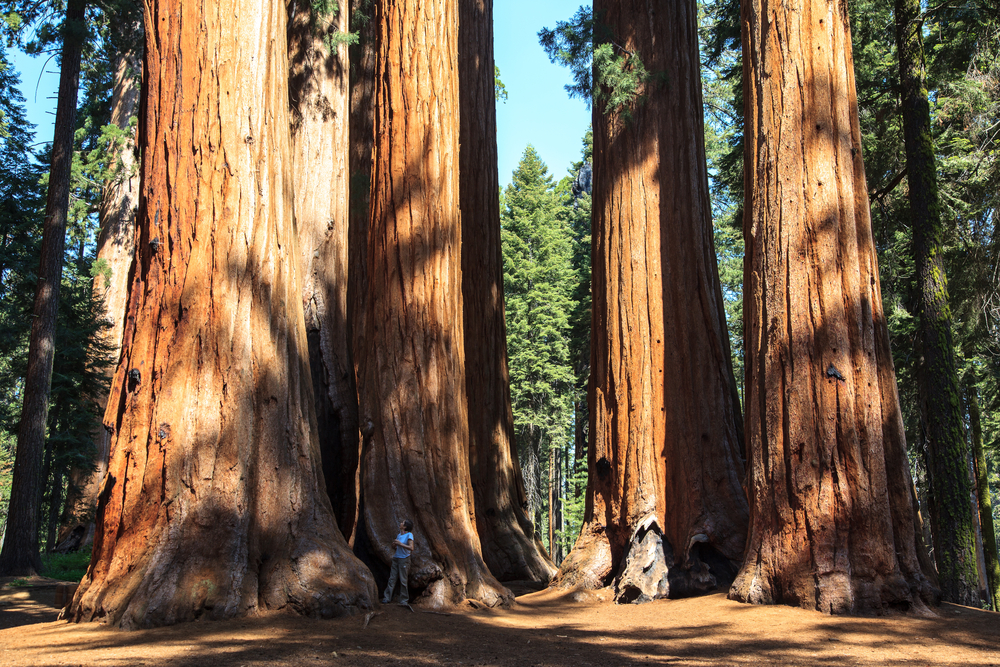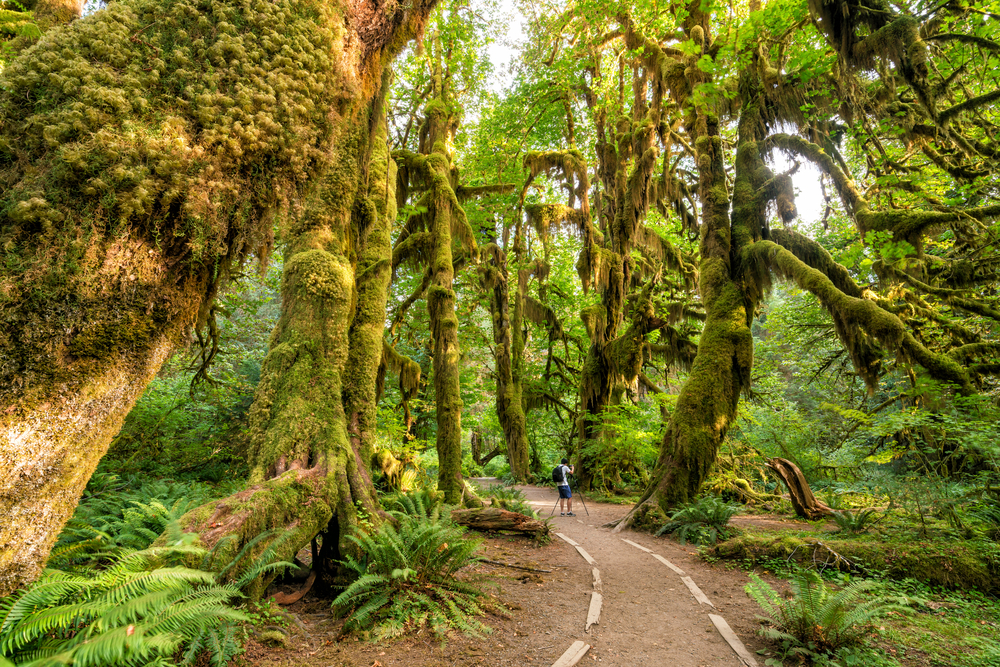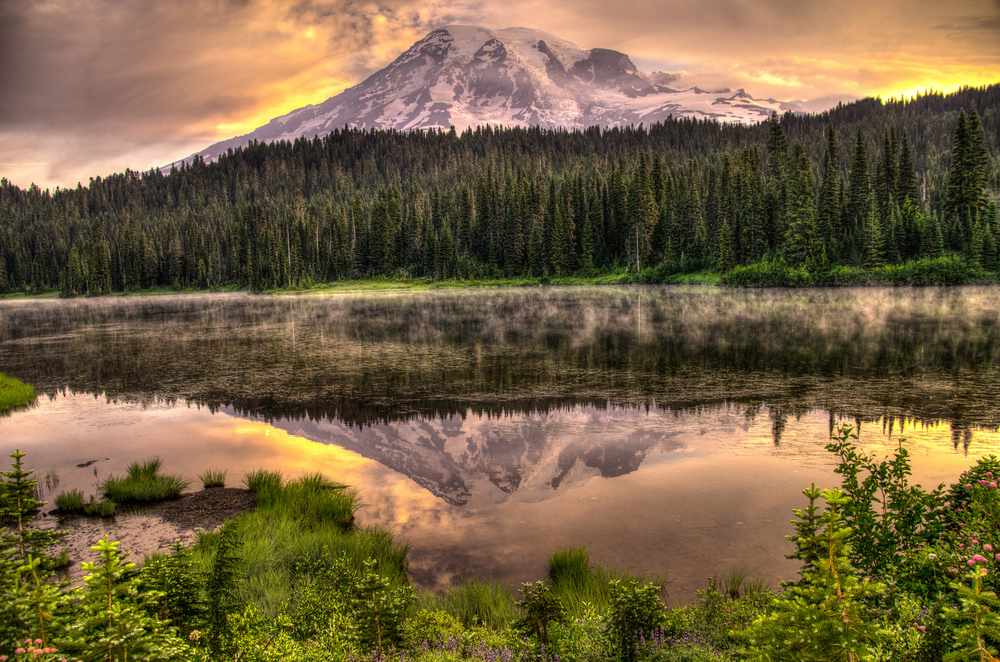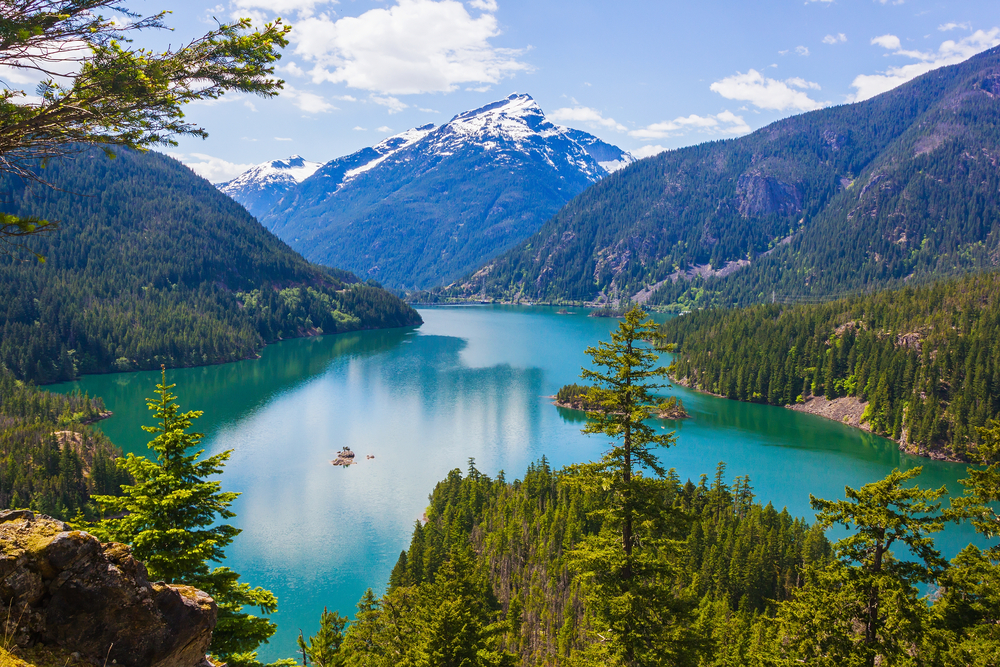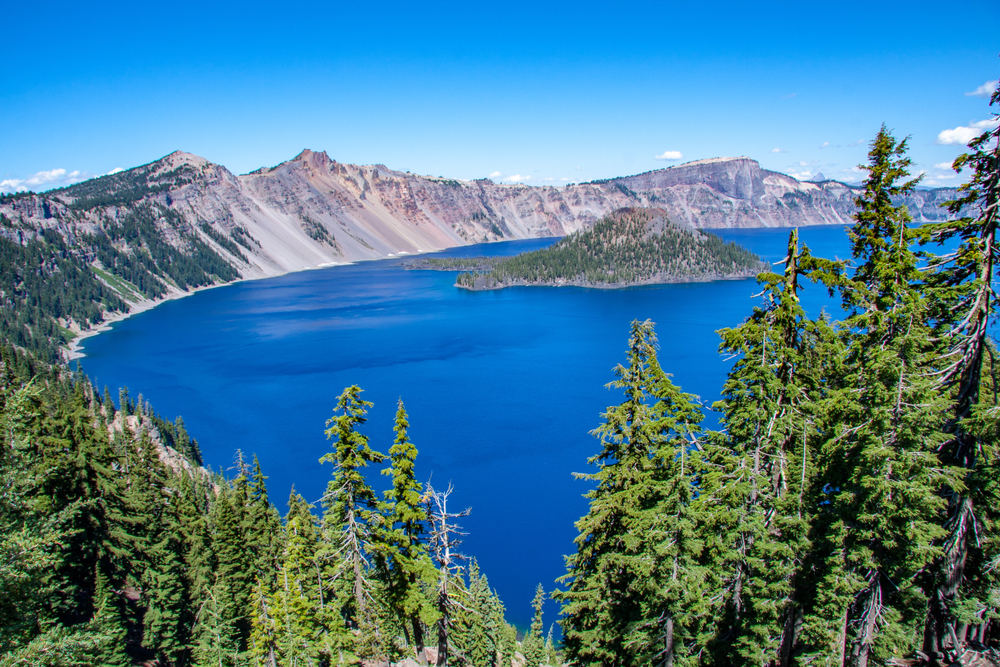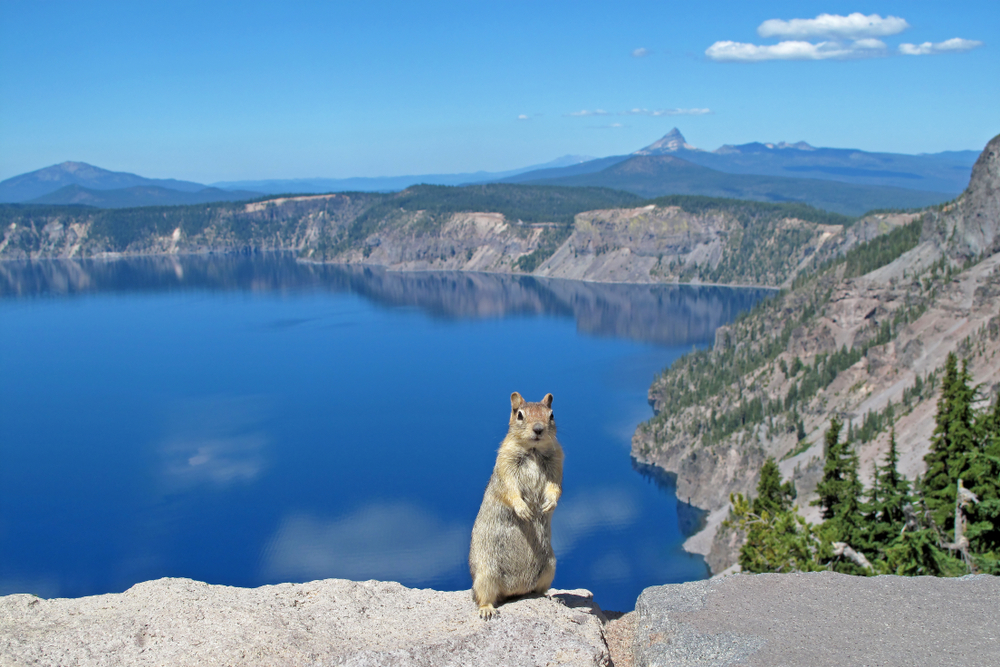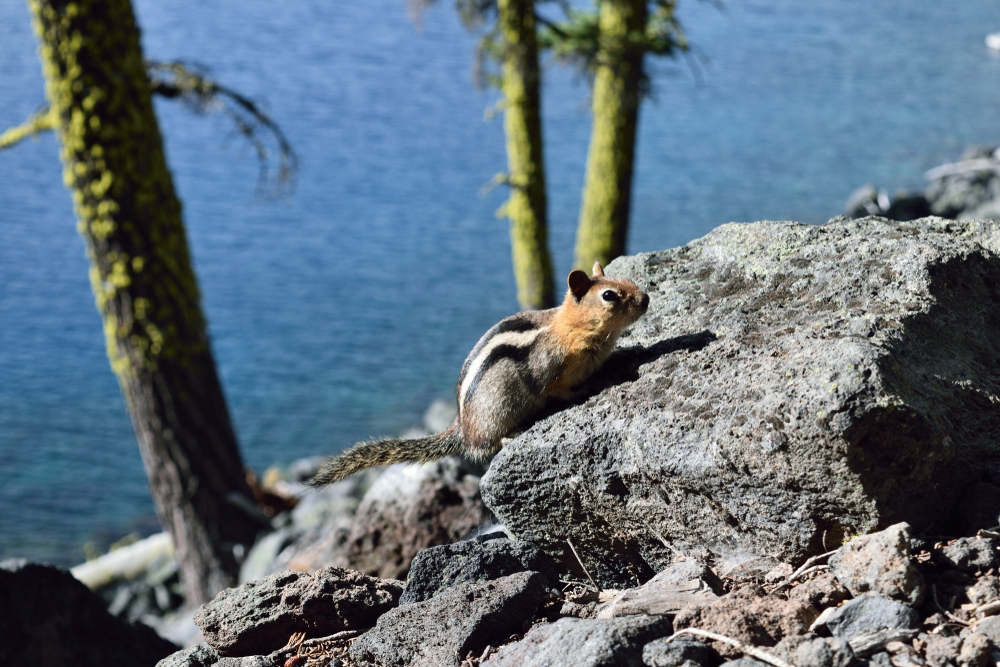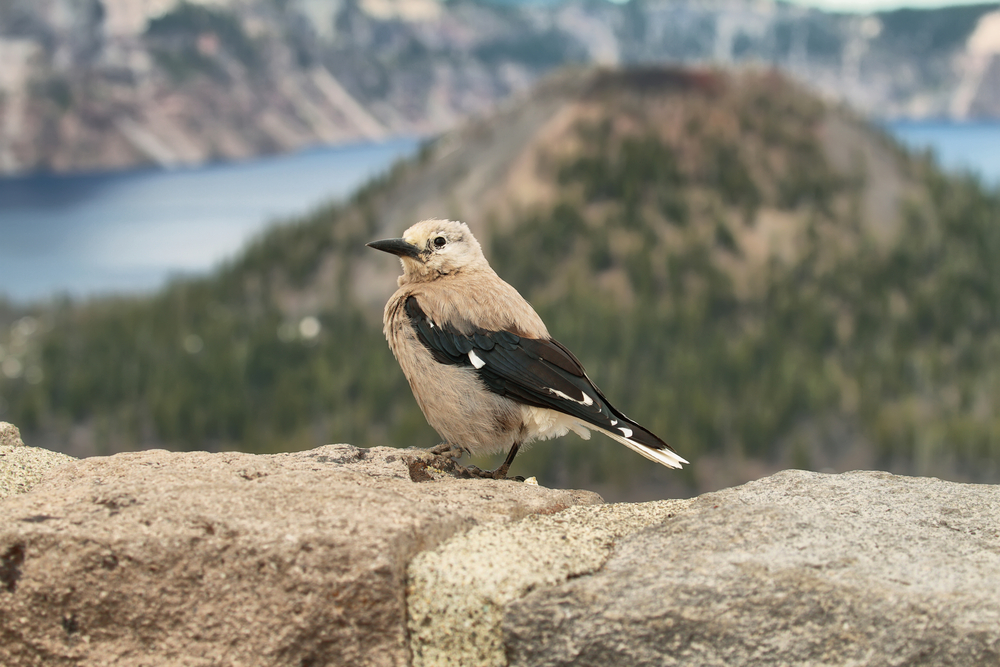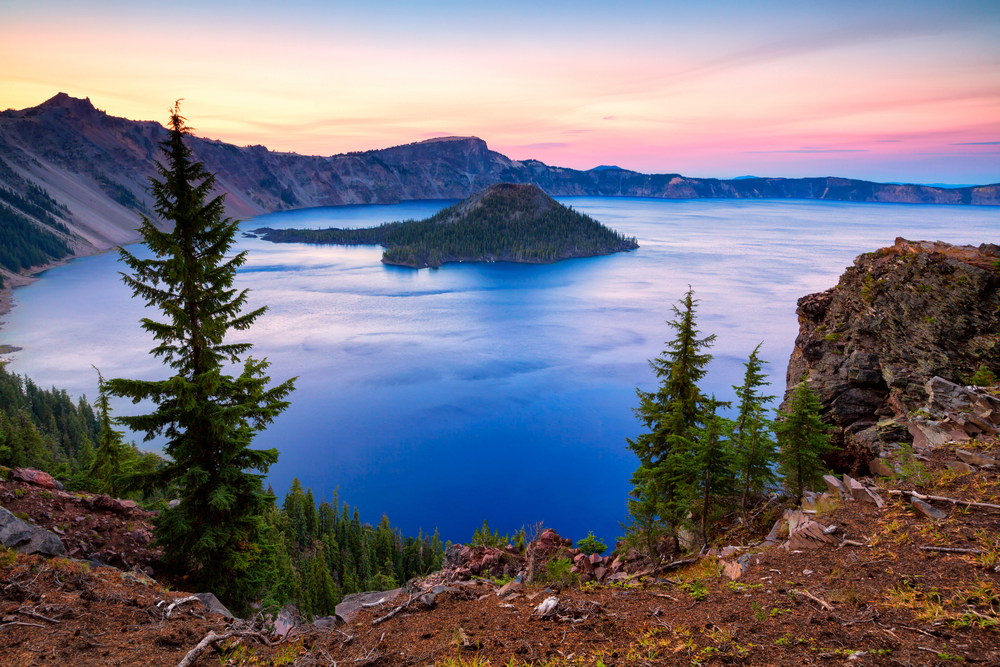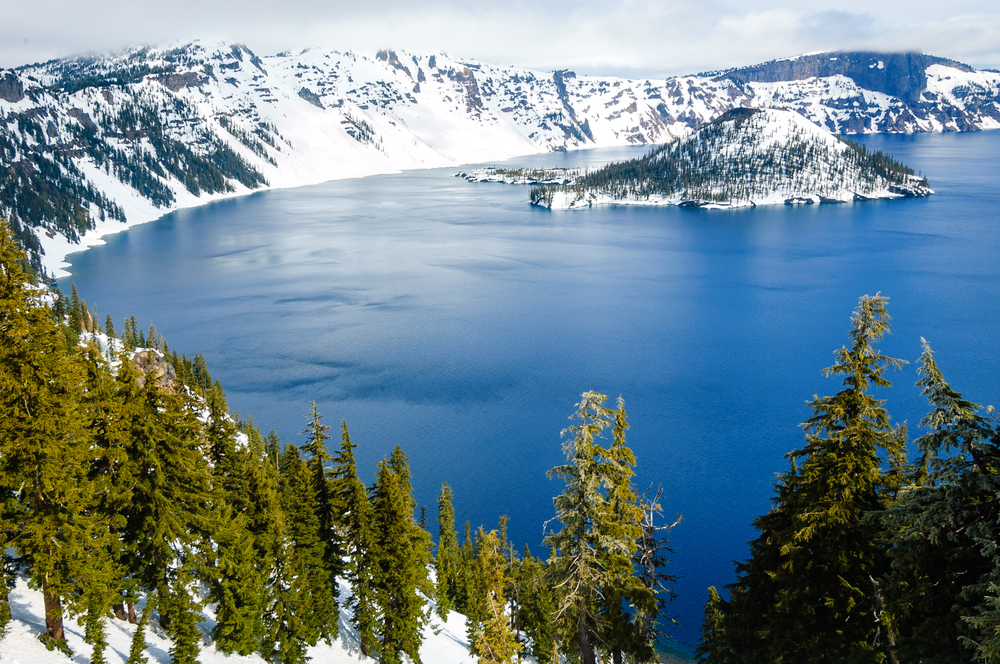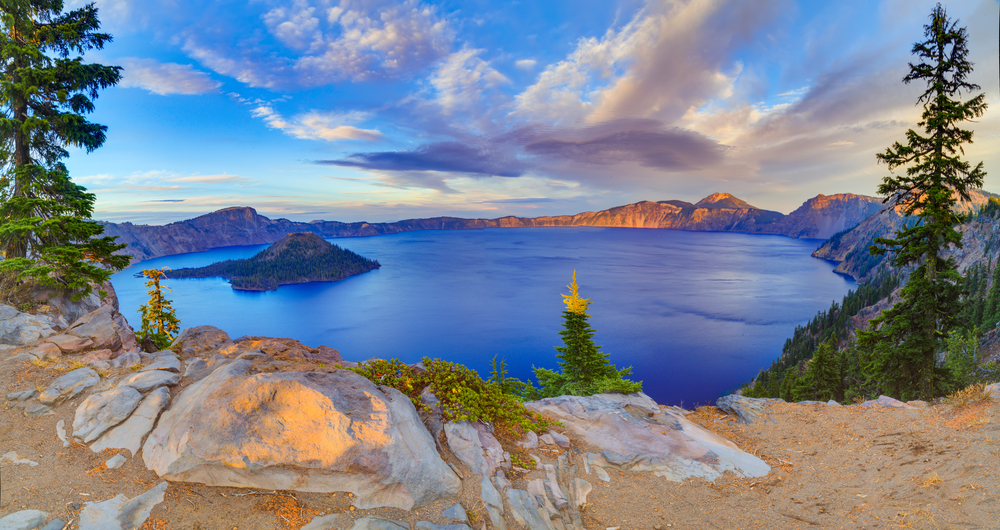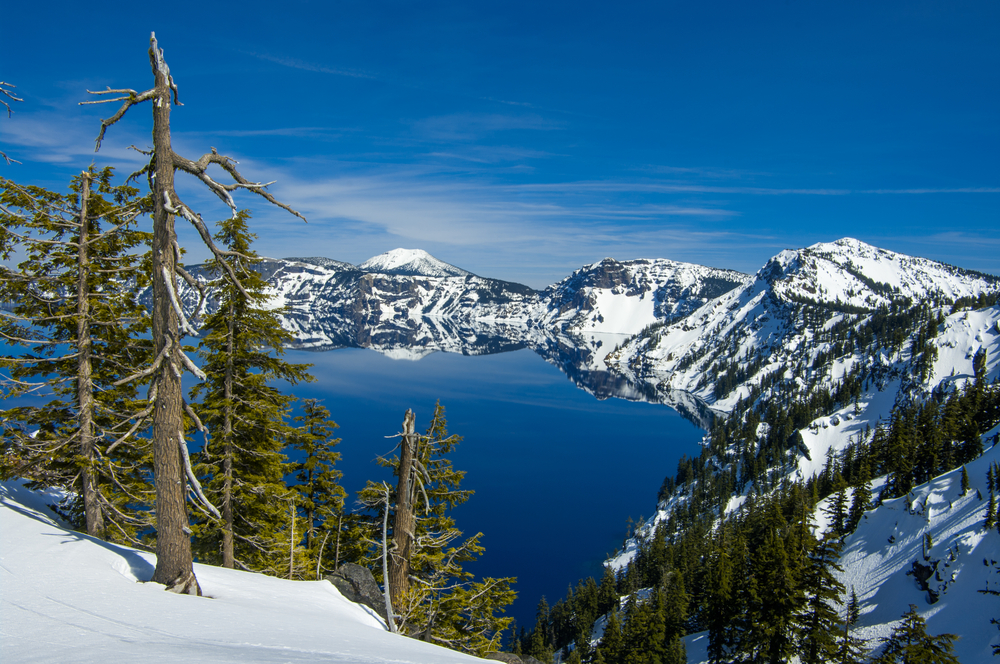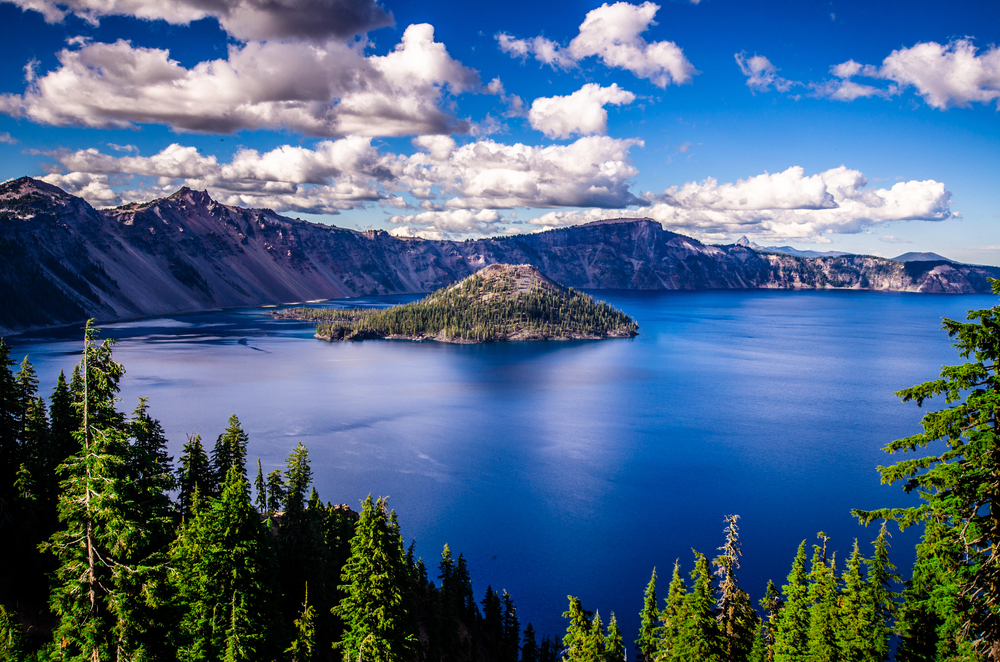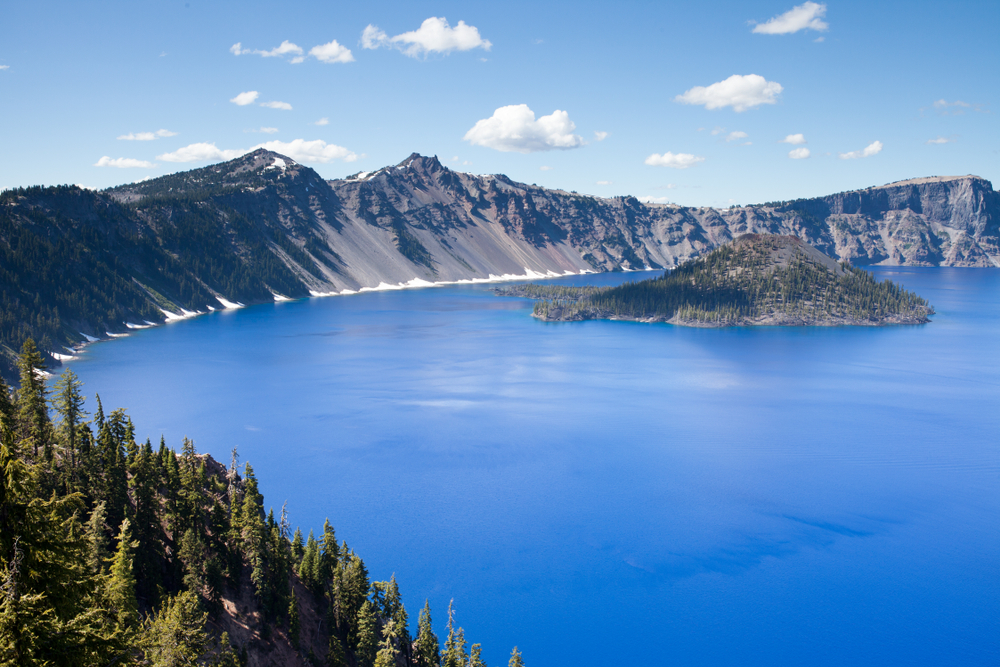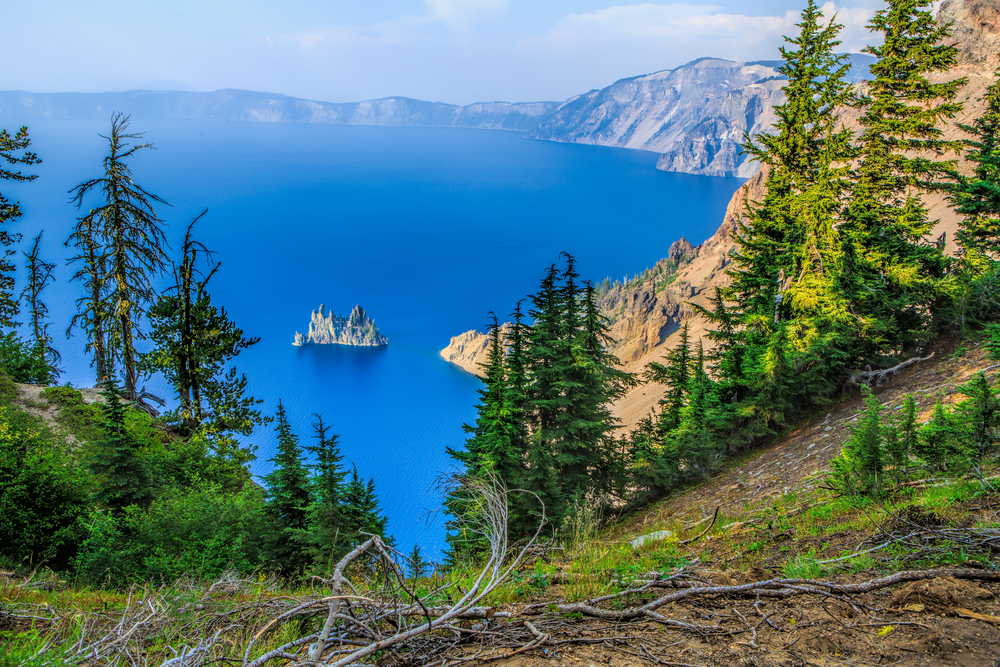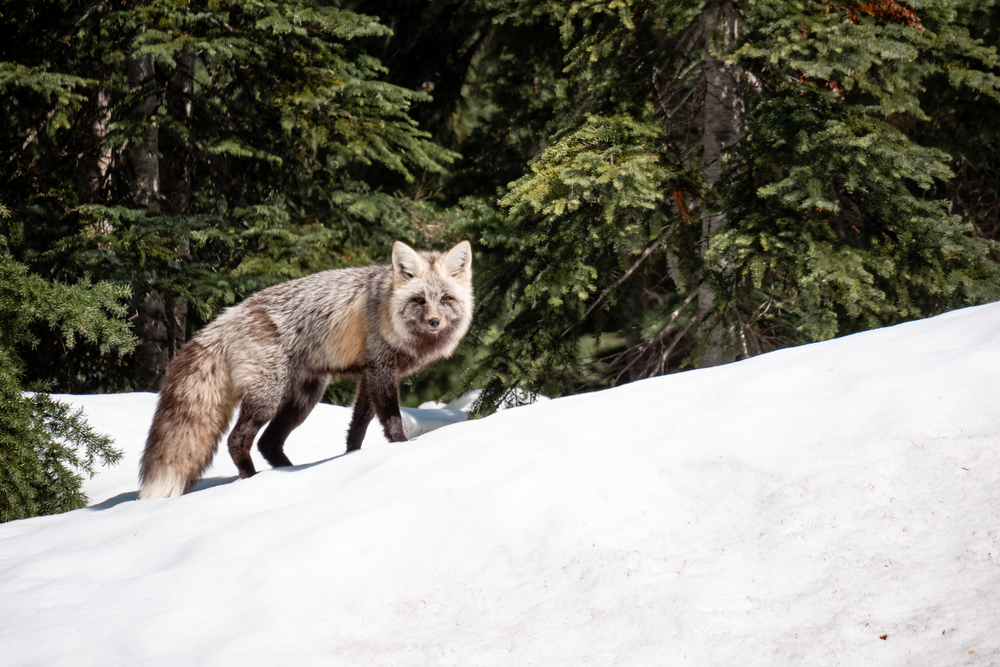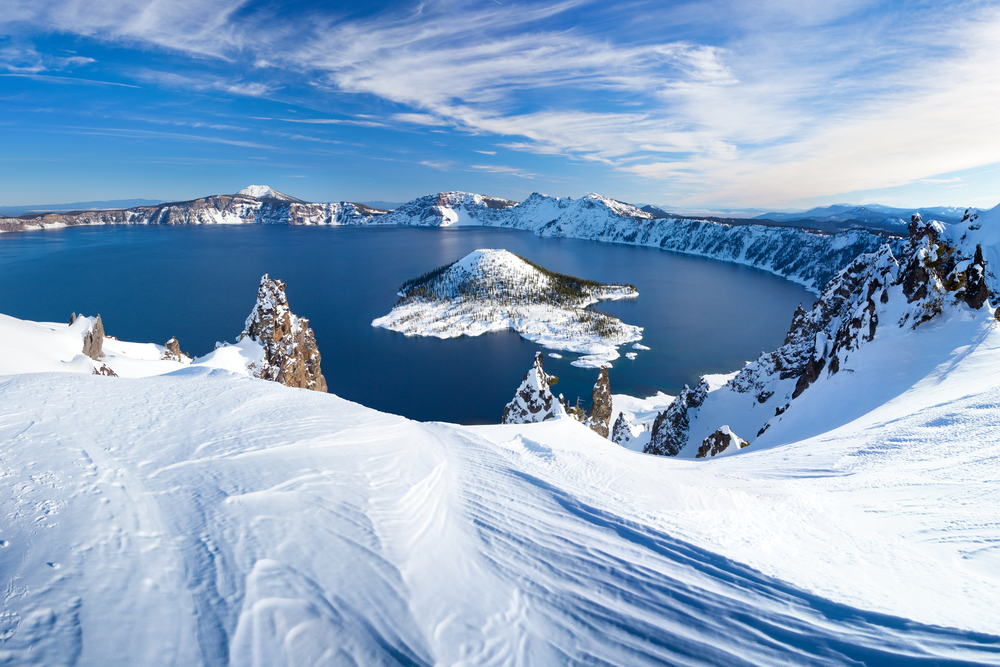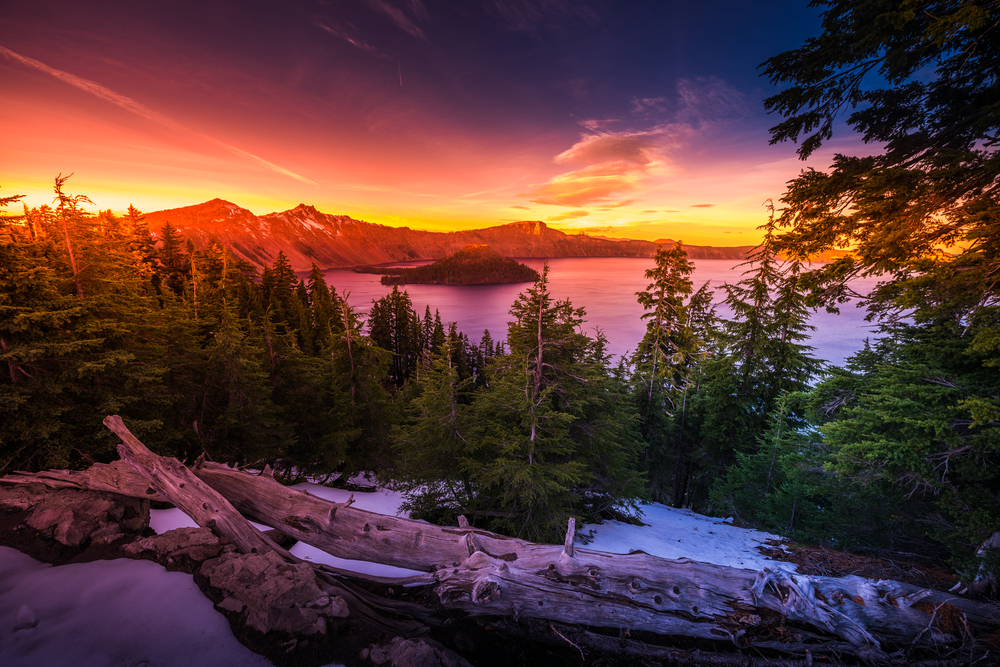Crater Lake Overview
Crater Lake National Park, located in the southern part of Oregon, USA, is a stunning testament to the power of natural forces. Established in 1902, it is the fifth-oldest national park in the United States and encompasses approximately 741 square kilometers (about 286 square miles). The park is renowned for its namesake, Crater Lake, which is the deepest lake in the United States and one of the clearest and most pristine lakes in the world. Formed about 7,700 years ago by the collapse of the volcano Mount Mazama, Crater Lake has no rivers flowing into or out of it, with its waters maintained solely by rain and snowfall, leading to its remarkable purity and deep blue color.
Surrounding the caldera are forests and meadows that transition into the rugged landscapes of the Cascade Mountains, offering a diverse range of ecosystems and habitats for wildlife. The park’s terrain provides a habitat for various plant and animal species, including black bears, elk, and a wide array of bird species. The park’s flora and fauna thrive in an environment ranging from lush old-growth forests to high desert.
Crater Lake National Park is not just a place of natural beauty but also a destination for adventure and exploration. It offers a variety of recreational activities, including hiking, biking, camping, and fishing. In the winter, the park becomes a wonderland for snowshoeing and cross-country skiing, with the Rim Drive offering spectacular views of the lake and the surrounding terrain.
One of the most iconic features of the park is Wizard Island, a cinder cone that rises from the lake’s surface, offering a unique opportunity for hiking and exploration. The park also features various overlooks and trails that provide breathtaking views of the lake and the geological features of the surrounding area.
Crater Lake National Park serves as a powerful reminder of nature’s ability to create and shape the landscape, offering visitors a place of awe-inspiring beauty, tranquility, and outdoor adventure. It stands as a jewel in the crown of the United States National Park System, inviting people from all over the world to experience its wonders.
Park Map
Crater Lake National Park Highlights
Engaging Crater Lake
Crater Lake National Park Trails
Sources
- AllTrails, Best Trails in Crater Lake National Park, https://www.alltrails.com/parks/us/oregon/crater-lake-national-park, retrieved April 2024.
- Britannica, Crater Lake, https://www.britannica.com/place/Crater-Lake-Oregon, retrieved April 2024.
- National Park Service, Crater Lake, https://www.nps.gov/crla/index.htm, retrieved April 2024.
- Oregon Explore, Facts About Crater Lake, http://oe.oregonexplorer.info/craterlake/facts.html, retrieved April 2024.
- Southern Oregon, Crater Lake, https://www.southernoregon.org/crater-lake/, retrieved April 2024.
- Travel Oregon, Crater Lake, https://traveloregon.com/things-to-do/destinations/lakes-reservoirs/crater-lake/, retrieved April 2024.
- US Department of Interior, 12 Things You Didn’t Know About Crater Lake National Park, https://www.doi.gov/blog/12-things-you-didnt-know-about-crater-lake-national-park, retrieved April 2024.
- Visit Bend, Crater Lake National Park, https://www.visitbend.com/points-interest/crater-lake-national-park/, retrieved April 2024.








































































